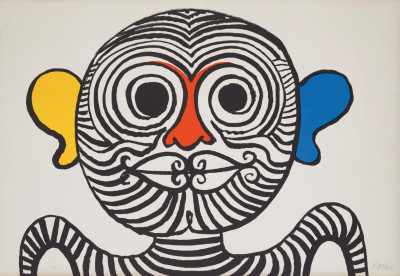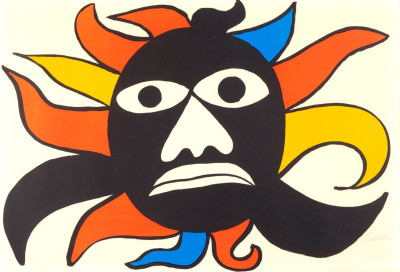About Alexander Calder
American, 1898-1976
Alexander Calder is perhaps best known for his large, colorful sculpture, which incorporates elements of humor and chance into uniquely engineered structures. Calder was born outside of Philadelphia to a successful, artistic family. His father and grandfather--both named Alexander Calder--were distinguished sculptors and his mother was a portrait painter. Although he initially studied mechanical engineering, receiving a degree from Stevens Institute of Technology, Hoboken, New Jersey, he eventually enrolled in the Art Students League in New York City (1923-1926) and studied painting with John Sloan and George Luks, among others. While working as a graphic artist on assignment at the zoo and circus, Calder discovered his facility for sketching animals. This subject would become a lifelong passion. In 1927 Calder went to Paris. Initially he created small, movable wood and wire figures, which he then assembled into a miniature circus, complete with balancing acrobats and a roaring lion. The popularity of "Calder's circus" soon brought him in contact with other artistic innovators. In the early 1930s, inspired by the color and composition of Piet Mondrian's work, Calder created his breakthrough mobiles. At first these abstract sculptures were motorized; later Calder modified his design to allow free-floating movement, powered only by air currents. These signature works incorporated Calder's interests in physics, astronomy, and kinetics, and above all, his sense of play.
By 1933 Calder had returned to the United States, where his abstract-organic sculpture, both mobile and stationary, attracted considerable attention and acclaim. He settled in Connecticut and continued to produce innovative works on both a large and small scale. After 1950 Calder spent part of each year in France. In addition to the monumental sculptures that can be seen in the United States and Europe, Calder applied his whimsical and lyrical sense of design to media as diverse as metal jewelry and theater sets.



